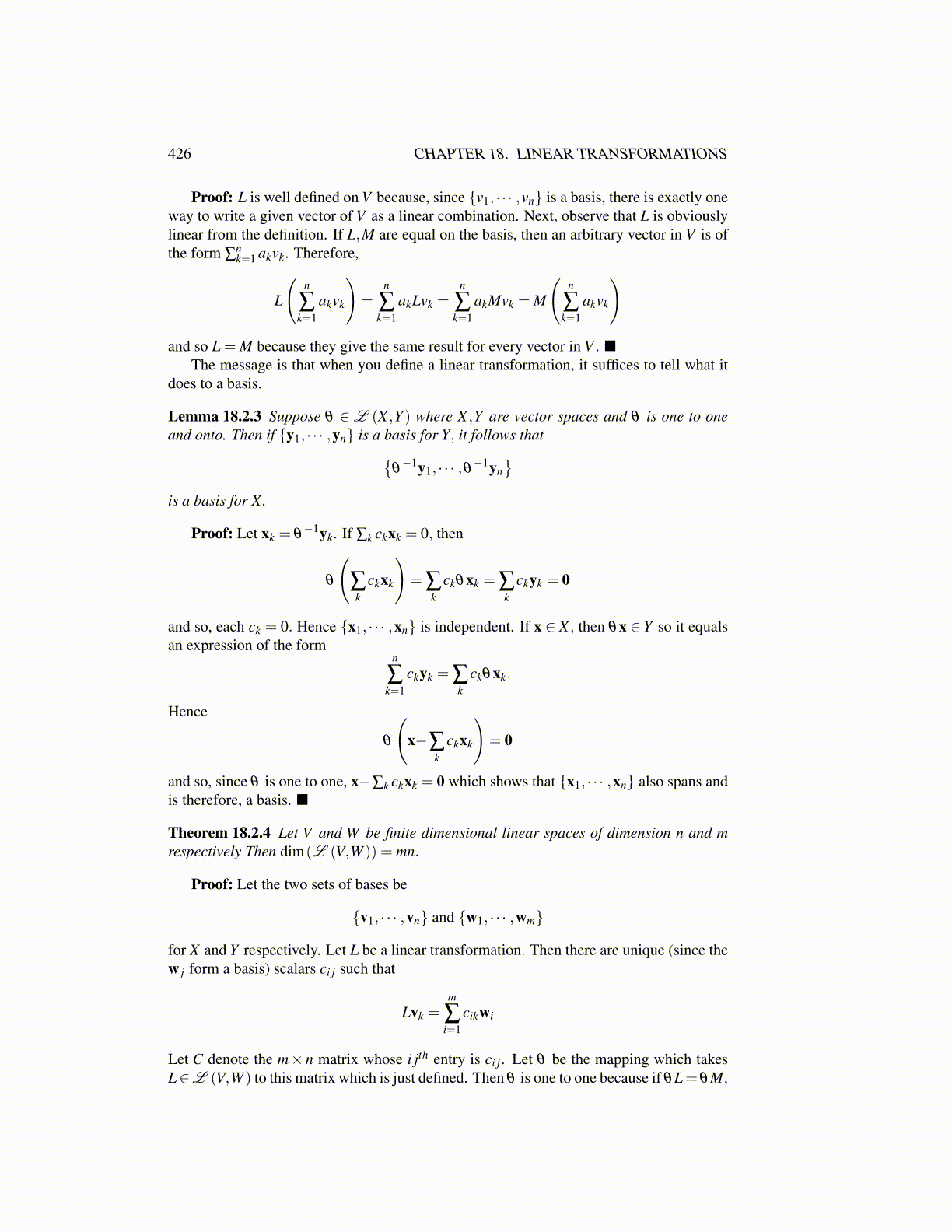
426 CHAPTER 18. LINEAR TRANSFORMATIONS
Proof: L is well defined on V because, since {v1, · · · ,vn} is a basis, there is exactly oneway to write a given vector of V as a linear combination. Next, observe that L is obviouslylinear from the definition. If L,M are equal on the basis, then an arbitrary vector in V is ofthe form ∑
nk=1 akvk. Therefore,
L
(n
∑k=1
akvk
)=
n
∑k=1
akLvk =n
∑k=1
akMvk = M
(n
∑k=1
akvk
)and so L = M because they give the same result for every vector in V . ■
The message is that when you define a linear transformation, it suffices to tell what itdoes to a basis.
Lemma 18.2.3 Suppose θ ∈L (X ,Y ) where X ,Y are vector spaces and θ is one to oneand onto. Then if {y1, · · · ,yn} is a basis for Y, it follows that{
θ−1y1, · · · ,θ−1yn
}is a basis for X.
Proof: Let xk = θ−1yk. If ∑k ckxk = 0, then
θ
(∑k
ckxk
)= ∑
kckθxk = ∑
kckyk = 0
and so, each ck = 0. Hence {x1, · · · ,xn} is independent. If x ∈ X , then θx ∈ Y so it equalsan expression of the form
n
∑k=1
ckyk = ∑k
ckθxk.
Hence
θ
(x−∑
kckxk
)= 0
and so, since θ is one to one, x−∑k ckxk = 0 which shows that {x1, · · · ,xn} also spans andis therefore, a basis. ■
Theorem 18.2.4 Let V and W be finite dimensional linear spaces of dimension n and mrespectively Then dim(L (V,W )) = mn.
Proof: Let the two sets of bases be
{v1, · · · ,vn} and {w1, · · · ,wm}
for X and Y respectively. Let L be a linear transformation. Then there are unique (since thew j form a basis) scalars ci j such that
Lvk =m
∑i=1
cikwi
Let C denote the m× n matrix whose i jth entry is ci j. Let θ be the mapping which takesL∈L (V,W ) to this matrix which is just defined. Then θ is one to one because if θL= θM,